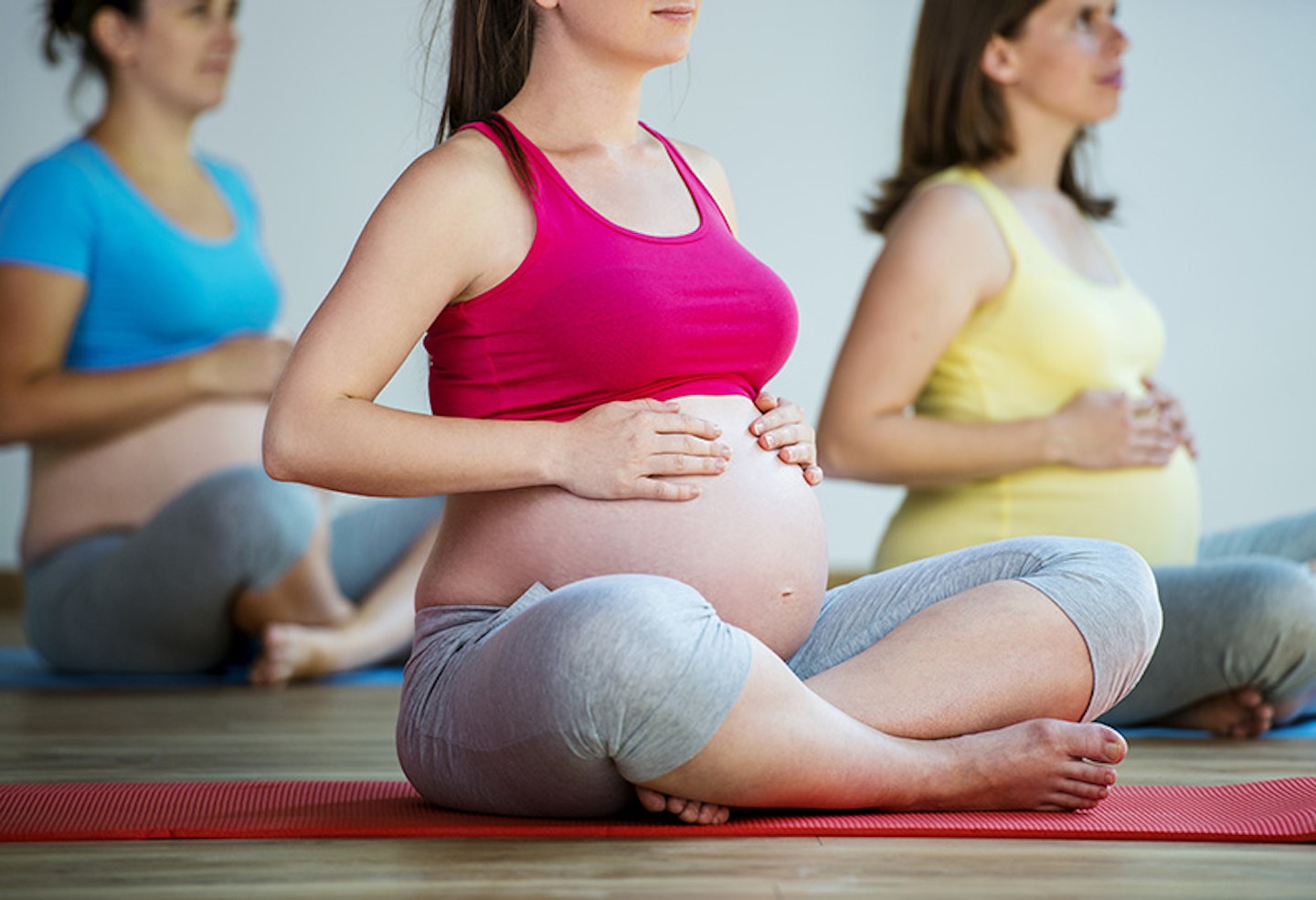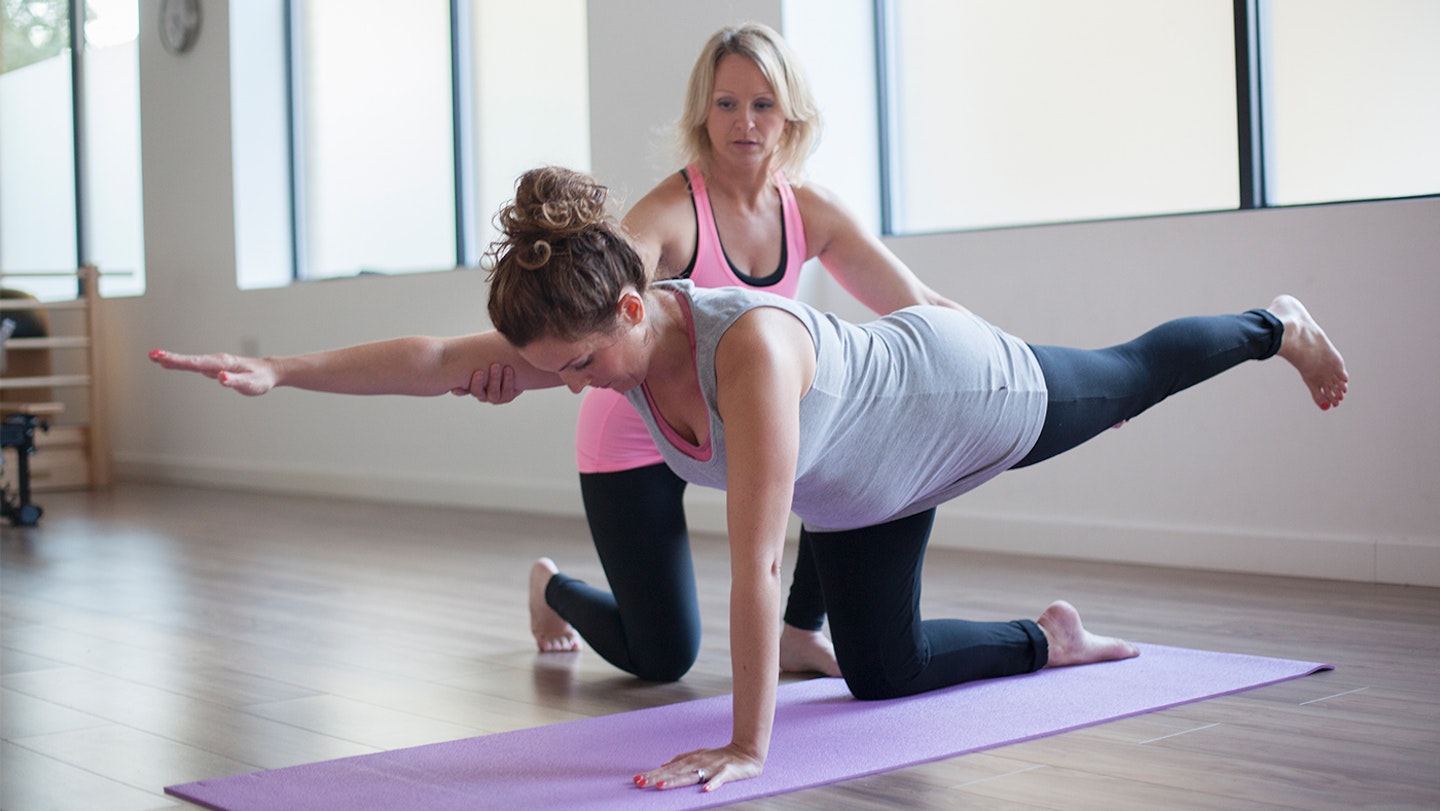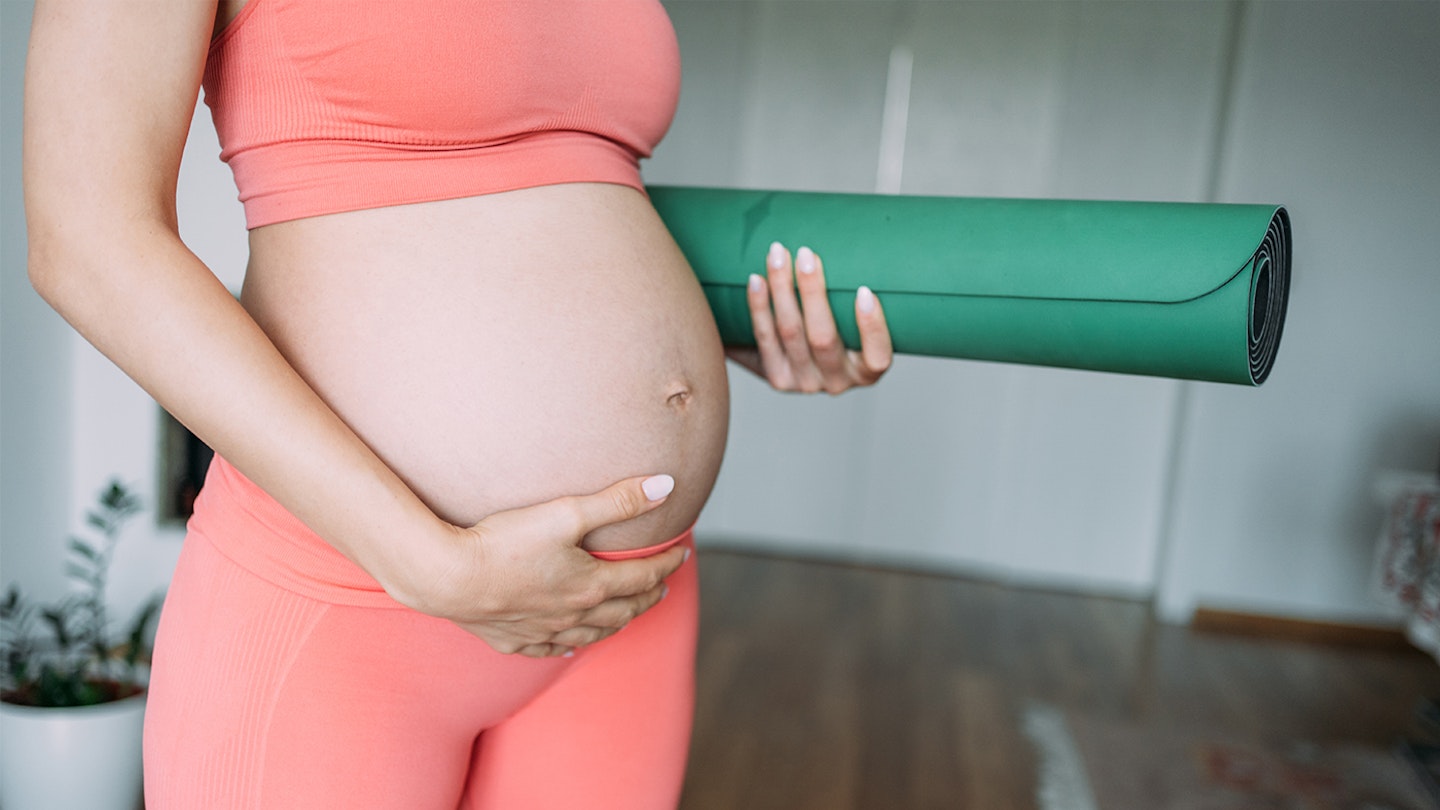We all know that the demands of pregnancy can take its toll on your body; back pain, sciatica and the weakening of your pelvic floor are all very common issues. Pregnancy pilates is an especially useful exercise while pregnant. Just like pregnancy yoga, Pilates helps with both labour as well as being a new mum by preparing you mentally and physically for the challenges of giving birth and looking after a baby.
What is pilates?
Pilates is a training method that aims to create a strong, functional body by reducing muscle imbalances and increasing core strength. Created by Joseph Pilates as a way of building strength in prisoners of war, it is incredibly powerful, and I know no one who doesn’t need Pilates in their life. As the body gets stronger, and our posture improves, we will also notice an increase in flexibility and mobility as well.
Pilates is often confused with yoga; however, they are both very different. Pilates is often performed using body weight alone as the resistance, but there are also many pieces of equipment that we use in Pilates such as a Cadillac, Reformer, Wunda chair, arc barrel etc.
The postures we associate with yoga were not designed with fitness in mind but were created to help assist someone with their practice of mindfulness. The poses in yoga (asanas) are there to help you focus, rather than change the way your body moves. Yoga has been adapted to the fitness industry, and now is associated with flexibility. Pilates was created with purely fitness in mind and is more focused on strength, but a by-product of Pilates is usually an increase in flexibility.
When to start pregnancy Pilates
Any time you feel ready to! The guidelines from the Department of Health are that pregnant women should aim for around 150 minutes of moderate-intensity exercise per week. When we say moderate intensity it should be that it’s getting us a little out of breath, but we would still be able to talk and have a conversation.
First trimester
In the first trimester of pregnancy, many women feel comfortable continuing with the types of exercise they have previously done, whether that be cardio-based, yoga, Pilates etc. This is completely safe, however, some women find the first trimester the most physically demanding and have low energy or morning sickness to contend with.
For this reason, some women prefer to reduce the intensity of their workouts or take more frequent rest days. It’s also worth letting your doctor or midwife know that you are aiming for an active pregnancy as soon as you can, so they can let you know if you have any absolute contraindications to exercise to be aware of.
Second trimester
By this stage, you've usually passed the likes of fatigue and morning sickness and are feeling better in yourself.
With your bump now visible, between week 14 to week 16, it’s usually uncomfortable to lie on your back or front and these positions should be avoided. It’s also not advisable to lie flat on your back for too long (around three minutes) as it can lead to something called Supine Hypotensive Disorder. This may mean you use props to help elevate you when in your usual Pilates or Yoga class, or that you switch to a prenatal-specific class.
Third trimester
In the third trimester, you'll no doubt notice that any energy you may have had is starting to leave.
At this point in your pregnancy, it's helpful to focus on the muscles that will be needed during labour, and for recovery – no matter how you birth your baby. There should be a large focus on glute engagement, to help support the pelvis as it deals with the weight of a growing uterus, and hip mobility work which can help mobilise the pelvis and allow optimal foetal positioning. There are of course logistical changes that need to be made to workouts now that there is a large bump to contend with, and an emphasis on pelvic floor engagement and relaxation can be helpful for a vaginal birth, and postnatal recovery.
What are the benefits of Pilates during pregnancy?
Pregnancy is the perfect time to prepare for the physical demands of labour and motherhood. In the past there has been an air of uncertainty around exercising whilst pregnant, with pregnant women told that they’re fragile - to relax and put their feet up. This needs changing. We now know that pregnant women are not fragile, and they are already performing an endurance event – pregnancy!
We know that active pregnancies can have really positive effects on our physical and mental health, and what better life event to train for than the marathon of becoming a mother. If we think about car seats, buggies and changing bags, they are all really heavy and awkward. We want to train for the repetitive movement motherhood brings, and ensure we are safe whilst doing them. This is where maintaining strength, fitness, and good posture during pregnancy plays a really important role in your postnatal life.
The benefits of pilates during pregnancy are very similar to those pre-pregnancy:
• Strengthens your stomach muscles, meaning your body can better handle the added weight of your baby as they grow
• Helps you to relax and improve sleep
• Reduces the risk of high blood pressure
• Boosts mental health: Research suggests an active pregnancy can reduce labour times and reduce your chance of an assisted birth.
• Takes the strain off your back and pelvis
• Strengthen your pelvic floor: Pilates is low impact (so ideal if you are struggling with a weak pelvic floor or pelvic girdle pain), has a huge focus on posture (which can change drastically change during pregnancy) and can really help support the core and pelvic floor. It’s almost always advised by Doctors, and even though it is safe, don’t be fooled into thinking it is easy!

Can I attend any Pilates classes?
I would say it’s always worth going to a prenatal Pilates class. Mainly because if you go to a regular class, it makes it really difficult for the instructor because they’re trying to explain exercises to everyone else, but also work out how to adapt it for the pregnant person. Secondly, not all instructors are prenatal qualified so they won’t actually all know how to adapt the class for you. There will be so many exercises where you’re told “you can’t do this exercise” or it’ll need to be adapted so much that you only do 50 per cent of the class. So I would always recommend trying to go to a pregnancy-specific Pilates class unless you really do know your stuff already.
For pregnancy Pilates delivered by specialists take a look at the Guild of Pregnancy and Postnatal Exercise Instructors website which is a not-for-profit organisation ensuring high standards are maintained.
What if I haven’t done Pilates before?
If it’s a prenatal-specific class, it shouldn’t matter at all. We’re all beginners at some point and the great thing about Pilates is there are so many options to make exercises easier or harder. If you’re a complete beginner, just make sure you let the instructor know so they know to give you more instruction/ keep more of an eye on you.

How can I make sure Pilates is safe for me during pregnancy?
If you are following a pre-natal Pilates class, your instructor will ensure that you are not doing any moves that are not suitable for pregnancy. You should also speak with your doctor or midwife before deciding to try Pilates.
